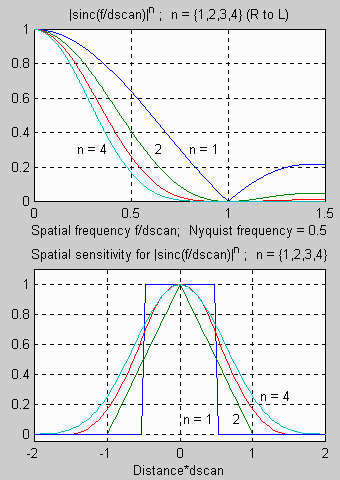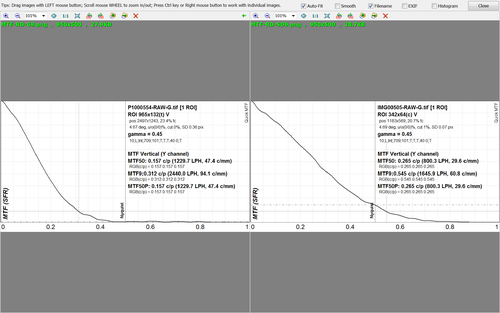If not, what is?
-
-
Why do you think it might not be?
-
Because there are technical references that say that the pixel count is not a measure of resolution, yet many photographers quote MP as the measure of resolution.
-
@xpatUSA has written:
If not, what is?
It is correct for the sensor, although the sensor itself also has some variability in effective fill factor, like the very low effective fill factor in your SD9, and the very high effective fill factor, greater than 100%, with strong AA filters.
The analog resolution of the lens is something separate from the sensor resolution.
A high-resolution sensor with a low-resolution lens may seem comically soft at the pixel level, but the potential to correct geometric distortions and aberrations is higher when oversampling the optics, and you don't miss anything the lens has to offer.
-
For the native base sensor which each pixel counts photons - yes it should be in a one to one relationship with resolution. However, when one decides they want color, then the pixel count is no longer in a one to one relationship with spatial frequency resolution. CFA's be they XTrans or Bayer reduce the native resolution of the underlying sensor through the interpolation required to turn the raw data into a color image. So for a monochrome camera like the Leica M11 mono or the Q2M, pixel count is a good inceptor of the resolution. With a color camera - then not so much.
-
[deleted]
-
-
[deleted]
-
@JACS has written:@xpatUSA has written:
20 MP at left: 3.4 MP at right, same lens, raw exports:
One would think that the 20 MP would have up to 5.9X more "resolution" but not even double, apparently ...
Actually, one may think (and one would be wrong) that 20mp would have sqrt(20/3.4)=2.42... more resolution in that metric.
Yep, but only with same aspect ratio ...
-
[deleted]
-
@JACS has written:@xpatUSA has written:@JACS has written:
Actually, one may think (and one would be wrong) that 20mp would have sqrt(20/3.4)=2.42... more resolution in that metric.
Yep, only with same aspect ratio ...
So one might be wrong in more than one way?
One might.
Quoted message:The important thing here [is] to make the question precise.
Please post the question to your satisfaction and I will consider editing the thread title.
Quoted message:There is a difference between a resolution of a sensor, which typically is just the MP count - or better, something like saying 4,000x6000 pixels - and a resolution of the camera/lens system.
Thank you. Fortunately, I did know that.
My personal metric preference is line-pairs per millimeter for a given value of Modulation Transfer Function as shown in the above illustration. MTF50 is popular.
On the other hand MTF9 is indicative of maximum resolution a la Rayleigh except if it is above Nyquist.
-
[deleted]
-
@JACS has written:
Sensors do not have MTF.
Incorrect: Norman Koren thinks otherwise:

www.normankoren.com/Tutorials/MTF2.html#sinc
Quoted message:From Wikipedia (boldface mine):
The optical transfer function (OTF) of an optical system such as a camera, microscope, human eye, or projector specifies how different spatial frequencies are captured or transmitted .
Next they say that MTF is a variant of OTF.
And no, this is not nit-picking. It is at the heart of the question. You need to have, more generally, a linear, translation invariant system, roughly speaking creating a continuous image from something continuous as well. Then it is a convolution, etc. A sensor alone does not do that - it just samples a projected image with some weights. It is one of the components of such a system only.
Again, please re-phrase the title question to your satisfaction and I will consider editing it.
-
[deleted]
-
-
@JACS has written:
Sensors do not have MTF. From Wikipedia (boldface mine):
The optical transfer function (OTF) of an optical system such as a camera, microscope, human eye, or projector specifies how different spatial frequencies are captured or transmitted .
Next they say that MTF is a variant of OTF.
Well, that settles it. After all, what would the founder of Imatest know about anything ... 😐
-
[deleted]
-

